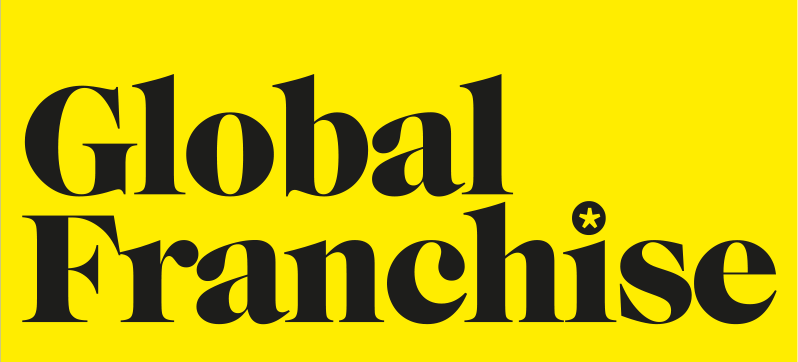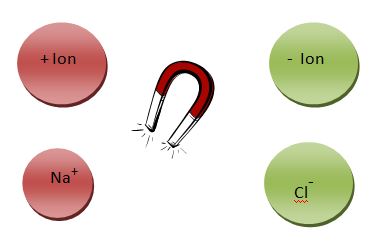
ISO 9000 and ISO are two management systems controlling different sectors in the process of production. ISO 9000 covers the quality management sector, while ISO covers the environmental management sector. ISO 14001, like other ISO standards, is voluntary,[12] with its main aim to assist companies in continually improving their environmental performance and complying with any applicable legislation. The standard can be applied to a variety of levels in the business, from the organizational level down to the product and service level.
ISO does not control conformity assessment; its mandate is to develop and maintain standards. ISO has a neutral policy on conformity assessment in so much that one option is not better than the next. The adopting organization decides which option is best for them, in conjunction with their market needs. ISO 14000, of which ISO is a key piece, was created as a handbook for organizations that seek to minimize the environmental impact of their actions. Headquartered in Geneva, Switzerland, its purpose is to develop and propose business practices and standards that are beneficial to business in all nations, particularly given the increasing globalization of economic activity. On the cost side, meeting the ISO standards can help reduce costs, as it stresses the efficient use of resources, limiting waste, recycling, and even finding new uses for previously disposed of byproducts.
- Originality/value – This study aims, for the first time as we were able to find out, at the analysis of the diffusion of IMSs throughout the years.
- They maintain quality and services with proper rules and regulations.
- It contains requirements for achieving and maintaining environmentally sound standards of doing business.
- To ensure compliance and effectiveness, the organization can utilize gap analysis, documentation, training, and auditing.
- All MSS have a similar design, which allows for integration between systems from different disciplines like quality and environmental management.
- ISO is an international standard that specifies the requirements for an Environment Management System (EMS).
This is the first worldwide published and accepted Environmental management system. ISO 9000 deals with the fundamental quality management system, which includes eight management principles. ISO 9000 was established by International Organization for Standardization that formed an effective quality assurance system. They keep the system of production, manufacturing, and customer needs in proper health.
Conjoint Analysis
Proper improvement and consistency are attained with the help of ISO 9000. Following the guidelines in ISO does not guarantee that an organization is meeting all of the regulations that may be imposed by the government under whose jurisdiction it operates. A Smithers member company may on occasion transfer your personal information to another Smithers member company, in some cases outside the European Economic Area. Smithers member companies are obligated by agreement amongst themselves to protect such information and comply with applicable privacy laws. Smithers will not pass on your information gained through an engagement without your consent.
To prevent unauthorised access or disclosure of your information, we have put in place stringent security and best practice processes to ensure your information is protected online. Most importantly, more contractors are working with ISO certified customers every year as the certifications are more widely used and accepted in the United States. Option two is often referred to as a customer or 2nd-party audit, which is an acceptable market term. Option one is sometimes incorrectly referred to as “self-certify” or “self-certification”. This is not an acceptable reference under ISO terms and definitions, as it can lead to confusion in the market.[14] The user is responsible for making their own determination.
Homes England Annual Report 2022 to 2023: Chair’s Forward and … – GOV.UK
Homes England Annual Report 2022 to 2023: Chair’s Forward and ….
Posted: Tue, 25 Jul 2023 07:00:00 GMT [source]
Our forecasting of the uptake of the ISO 9001 standard is significant for the certification bodies to understand market diffusion and trends. Implications include this study providing valuable policy guidelines for decision-makers, and new opportunities for further research for scholars. The ISO series of environmental management standards are intended to assist organizations manage the environmental effect of their business practices. The purpose of the ISO 9000 series is to encourage organizations to institute quality assurance management programs. ISO is a set of standards created to help companies around the world reduce their adverse impact on the environment. It’s a framework for improved and more environmentally-conscious quality management systems by organizations large and small.
ISO (9000& 14000 Series)
In this article, we will explore the revision history of ISO 9000 and how it differs from ISO 14000. The entire process can take several months and even years depending on the size of the organization. If an organization is already ISO 9000-certified, the implementation of ISO is a shorter process. ISO 9000 is an international standard for quality management systems. For most organizations, achieving compliance with ISO 9000 is a prerequisite for launching a program for ISO compliance. Both standards provide extensive guidance on establishing management practices that address the specific subjects.
- ISO 14001, like other ISO standards, is voluntary,[12] with its main aim to assist companies in continually improving their environmental performance and complying with any applicable legislation.
- Smithers will not pass on your information gained through an engagement without your consent.
- When an organization is compliant with ISO 14001, it can either register with a third-party registrar or self-declare its compliance.
- This makes it easier for organizations looking to implement more than one ISO-MSS at once, as certain requirements are shared.
The organization must then implement the requirements of the standard within its processes, policies, and procedures. To ensure compliance and effectiveness, the organization can utilize gap analysis, documentation, training, and auditing. Afterward, a certified body will carry out an external audit of the organization’s quality management system to verify that it meets the standard’s criteria and identify any nonconformities or opportunities for improvement. Finally, if successful in passing the audit, the organization will receive a certificate valid for three years but must maintain and improve its system and undergo periodic surveillance audits. ISO specifies what’s required to implement an effective EMS for organizations of all sizes.
ISO 9000 vs ISO 14000
ISO 9000 can help a company satisfy its customers, meet regulatory requirements, and achieve continual improvement. However, it should be considered to be a first step, the base level of a quality system, not a complete guarantee of quality. ISO is all about managing environmental health while doing business or production. They help organizations to involve incorporate environmentally responsible practices. ISO 9000 provides a standardized set of qualities that makes international trading smooth.

They all have different areas covered for environmental health improvement. The difference between ISO 9000 and ISO is that ISO 9000 helps in the production of quality products and is a Quality Management system. ISO 1400 also uses the Annex SL structure, but there are differences in the focus of the management system. International Organization for Standardization established and published this set of rules and standards.
How to get ISO 9000 certified
Design/methodology/approach – Data concerning the evolution of the amount of IMSs in Greece, Italy, Portugal and Spain were collected for the time period between 1999 and 2015. The behaviour of the evolution of the number of IMSs over the years was studied adopting both the Gompertz and the Logistic models. The results obtained with these two models were compared and analysed in order to provide a forecast for the next years.

ISO 9000 determines the quality policy objectives and is a quality management system. ISO series of international standards accepted and maintained for environmental purposes. They guide the System, techniques, and principles to keep environmental surroundings healthy. The fourth option, certification, is another independent third-party process, which has been widely implemented by all types of organizations. Service providers of certification or registration are accredited by the International Accreditation Forum or national accreditation services such as UKAS in the UK.
We gathered ISO 9001 countrywide certification data over nine years from 2018 to 2026. The result reveals that Germany will likely continue to lead ISO 9001 certifications at a country level through 2026. We also find that Japan and UK required more time for ISO 9001 certification to double than other countries.
The framework was founded on the concept of Plan-Do-Check-Act (PDCA). ISO standard has many benefits, the reason why companies should consider adopting it as one of their strategic approaches to improving their environmental performance. ISO is similar to ISO 9000 quality management in that both pertain to the process of how a service/product is rendered, rather than to the service/product itself. As with ISO 9001, certification is performed by third-party organizations rather than being awarded by ISO directly. The ISO and ISO audit standards apply when audits are being performed.

The primary difference between ISO 9000 and ISO is one for maintaining product quality and another one is for an organization so that they aware… The basic principles of ISO are based on the well-known Plan-Do-Check-Act (PDCA) cycle. Find out how to get your organization ready for ISO 9001 certification. Enter the email address you signed up with and we’ll email you a reset link. If you have forgotten your password, please enter your email address below and click “Reset Password”.
The purpose of ISO is to facilitate international trade and cooperation in commercial, intellectual, scientific and economic endeavors by developing international standards. ISO originally focused on industrial and mechanical engineering standards. Now, it has ventured into setting standards for an organization’s processes, policies, and practices. Purpose – This paper dissects the diffusion of Integrated Management Systems (IMSs) encompassing the ISO 9001, ISO and OHSMS standards in the South European countries.
Practical implications – The obtained results provide a cross-section of the diffusion of IMSs certifications in the South European countries and enable a forecast for the trend in the next years. Originality/value – This study aims, for the first time as we were able to find out, at the analysis of the diffusion of IMSs throughout the years. ISO is meant to be a step-by-step guide for establishing and then achieving environmentally-friendly objectives for business practices and products. The purpose is to help companies manage processes efficiently while minimizing environmental effects. On the other hand, ISO focuses on how well an entity can manage its environment. The ISO is based on continual improvement, whereby an organization will need to implement and improve environmental conservation processes and monitor them continually.
Eveready Unveils ‘Hero Banne Ka Power’ Campaign for its … – Press Trust of India
Eveready Unveils ‘Hero Banne Ka Power’ Campaign for its ….
Posted: Fri, 21 Jul 2023 12:25:57 GMT [source]
Then there’s ISO 14004, which offers additional insight and specialized standards for implementing an EMS. ISO includes standards that cover aspects of management practices inside facilities, in the immediate environment around the facilities, and during the life cycle of the actual product. This includes understanding the impact of the raw materials used to create the product as well as the impact of its eventual disposal. This means they share a number of requirements because all ISO-MSS follow the same High-Level Structure (HLS). All MSS have a similar design, which allows for integration between systems from different disciplines like quality and environmental management. Below are the ten shared clauses of the HLS that can experts consider as similarities between ISO 9001 and ISO 14001.
Option three is an independent third-party process by an organization that is based on an engagement activity and delivered by specially trained practitioners. This option was based on an accounting procedure branded as the EnviroReady Report, which was created to help small- and medium-sized organizations. Its development was originally based on the Canadian Handbook for difference between iso 9000 and iso 14000 Accountants; it is now based on an international accounting standard. International Organization for Standardization is an organization that is making rules and standards for our security, environment, product quality, organizations, and safety issues. The different rules or standards are for different things so for differentiating all theses they naming all theses.
















